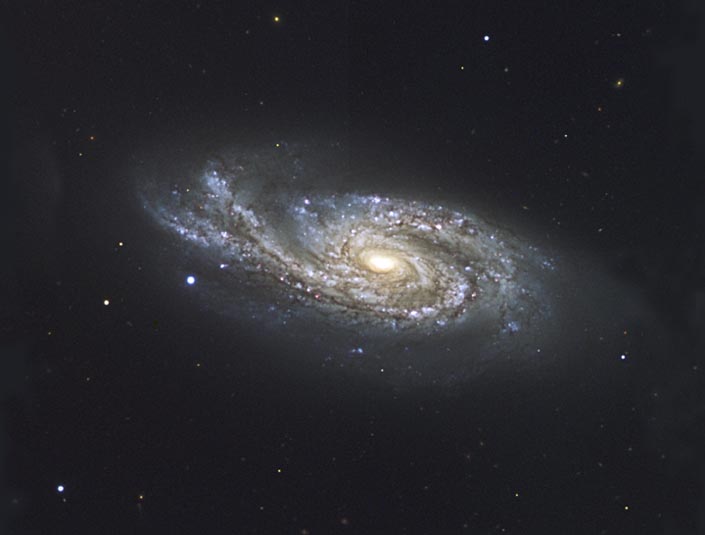
Galaxies
RA 2hr 23m 4.59s Dec -21° 14' 2.26"
Cetus
60 million light years
10.5
6.31 x 5.50 arcminutes
North is 0.1° right of vertical
ESO
July 26, 2006
ABOUT THIS IMAGE:
NGC 908 is located 65 million light-years towards the constellation of Cetus (the Whale). This spiral galaxy, discovered in 1786 by William Herschel, is a so-called starburst galaxy, that is, a galaxy undergoing a phase where it spawns stars at a frantic rate. Clusters of young and massive stars can be seen in the spiral arms. Two supernovae, the explosions of massive stars, have been recorded in the near past: one in 1994 and another in May 2006.
The galaxy, which is about 75,000 light-years long, also clearly presents uneven and thick spiral arms, the one on the left appearing to go upwards, forming a kind of ribbon. These properties indicate that NGC 908 most probably suffered a close encounter with another galaxy, even though none is visible at present.
Data
obtained with FORS2 on ESO's Very Large Telescope in the night of August
13 to 14 2000, using images through B, V, and R filters, for a total exposure
time of 4 minutes only. North is up and East is to the left. The data
were extracted from the ESO Science Archive and further processed by Henri
Boffin (ESO).